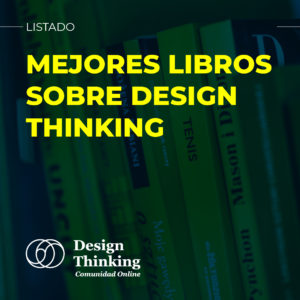El Design Thinking es la intersección de las necesidades de las personas, su viabilad técnica y su viabilidad como negocio.
What is Design Thinking and why do I need it for my projects?
Where does the term come from and what is the history of Design Thinking?
The concept of Design Thinking was raised in the late 80s by David Kelley, who led the creation of d.schoolat Stanford University. David Kelley is the creator of the first Mouse for Apple; Professor, consultant and co-founder of the company Ideo.com. He has driven his life as a «designthinker» and is co-author of the book Creative confidence.
Its conceptualization and massification is due to Tim Brown, professor at the Stanford University School of Engineering and co-founder of the consulting firm Ideo.com (1991), who explained in detail this new concept in an article published by Harvard Bussiness Review in 2008. Author of the book Change by Design.
1. What is Design Thinking?
Design Thinking refers to the creative strategies that designers use during the design process. Design Thinking is also an approach that can be used to consider issues, with a means to help within the professional practice of design and has been applied in both business and social fields. Design Thinking in business uses the designer’s sensibility and methods to adjust the needs of people with what is technologically feasible and what a viable business strategy can turn into customer value and a market opportunity. (Design thinking Wikipeda – Definition extracted)
It is a way of thinking centered on people and that has given rise to a method that allows solving problems based on the needs of users.
Its fields of application include: product development, services, public policies, urban interventions, organizational design, community management, strategic planning, among others. In Italy, it was called «Strategic Design» to the application of design to the vision of a company. In parallel at Stanford University in the United States, it was developed as a method and acquires the name of «Design Thinking» The power of DesignThinking lies in its ability to go beyond existing paradigms, rethinking services, experiences and products.
2. What are the phases of Design Thinking?
The Design Thinking process consists mainly of five stages. It is a process in «Double Diamond», what does double diamond mean? Very simple there are divergent stages in which you have to collect a lot of information and convergent stages in which you have to narrow down the phases so as not to get lost in a sea of contents.
The Design Thinking process is not linear, this means that you can iterate and go back in the phases if your project requires it.
Empathize: first you have to put yourself in the place of the other
Empathy is putting oneself in the place of the other: see with your eyes, feel with your heart and experience with your senses. Empathy is achieved as the result of a patient observation, of living the experience subject to being redesigned, as if it were our first time (living it), realizing its context and real environment, and in-depth interviews.
The latter are open conversations where the center is in understanding the user’s worldview before the experience under study.
Define: the next thing we are going to raise is what the problem is
Definition previously requires an emptying of empathy and a quantitative and qualitative analysis to identify the values that underlie the behaviors, phrases and cosmovision of empathized users. The POV becomes a mobile pivot / temporary anchor based on which we can imagine a thousand and one solutions in the next stage.
Ideation: now it’s time to imagine possible solutions
Ideation is to think of a thousand and one solutions. The most important rule in the ideation sessions is to say «Yes, and …». This allows to achieve continuity, diversity of ideas, co-construction of concepts, while postponing judgments. The incorporation of illustrators and actors can facilitate the process.It is possible to incorporate challenges (creativity games) in the ideation stage that extreme the need posed in the point of view.
The ideation ends with the selection of concepts to be prototyped. The voting criteria are previously defined by the Design Thinkers team, and revolve around technical feasibility, economic viability and user desirability. The most important rule in the ideation sessions is to say «Yes, and …». This allows to achieve continuity, diversity of ideas, co-construction of concepts, while postponing judgments. The incorporation of illustrators and actors can facilitate the process.
Prototyping: we will make the ideas physical
Prototyping is making ideas physical. The prototypes can be performances, sketches, 3d, sketches, illustrations … The only rule is to consume the least amount of resources and time, so that you can see test the solutions that have emerged in the ideation stage, as soon as possible.What is fast? What is cheap?
A concept can be prototyped in a couple of minutes using craft materials.In the case of complex concepts, it is possible to isolate the vasiable one that is to be tested: internal, aesthetic functioning, interaction with its surroundings, etc., and prototype accordingly. Prototyping is making ideas physical.
Test: Later we will check how the user / product or service interaction is
To test is to open the conversation based on prototypes, to extract information from the needs of the users and how the concepts generated satisfy them or not. Testing is simple, empathize but based on an «excuse»: The prototype.The test requires a subsequent Unpack in which the team makes decisions about the next steps of the project.
Testing can open doors to deepen empathy, redefine the possible problem, find more ideas in the ideation phase, and even retake prototypes that remained along the way. Thus, the process becomes iterative.



